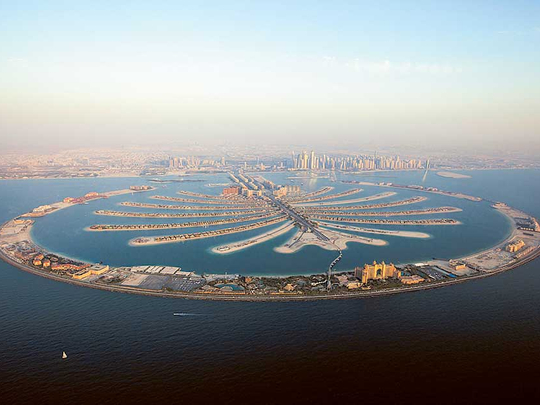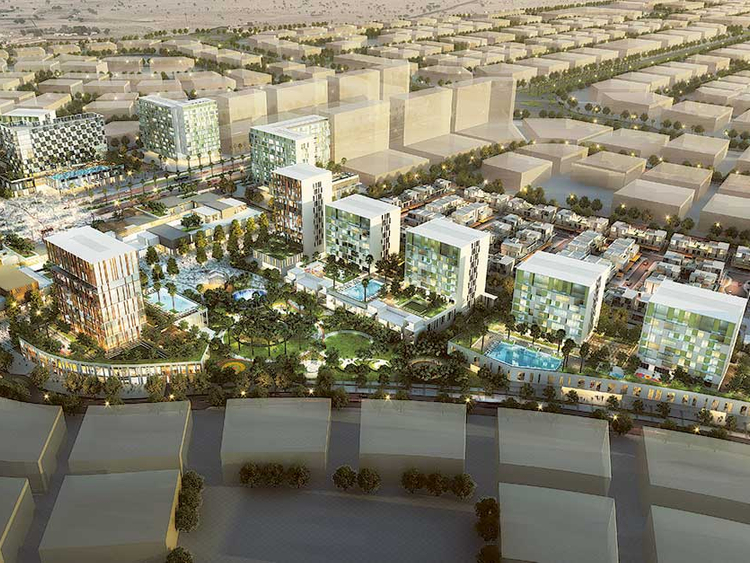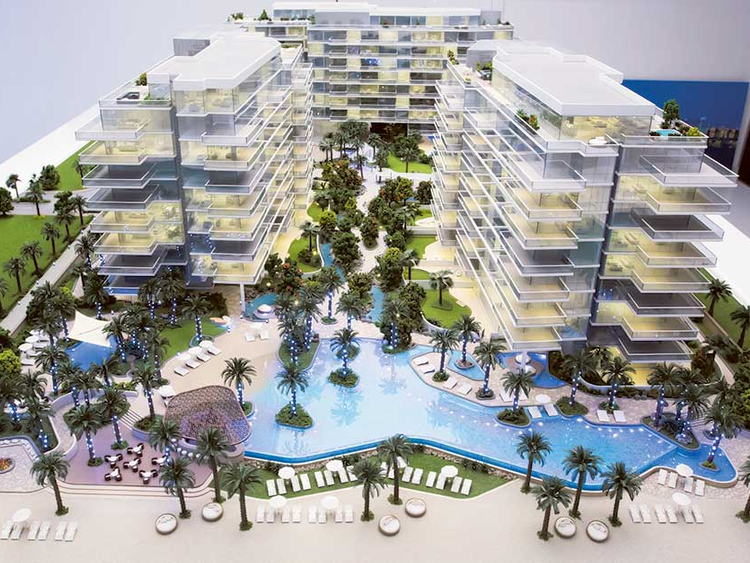
Dubai
The uber-luxury villas on the Palm and the more affordable apartments in Sports City are recording the best recovery in values from the lows hit during the last 30 months. Properties in Sports City have put on more than 3.5 per cent from what they were in 2014, while Palm villas come in just under that, according to data from Reidin-GCP. Apartment prices on the Palm are also gaining some of the value shed during the correction, gaining 2 per cent.
Across Dubai’s freehold areas, the value increases are currently at the 1 per cent mark, while for villas specifically, it is at 1.5 per cent.
So, what is it that today’s investors are looking for in Dubai realty? “Palm Jumeirah fell considerably more than the city-wide - or even the villa index - over the last two years,” said Sameer Lakhani, Managing Director at Global Capital Partners.
“Palm Jumeirah prices fell by more than 22 per cent compared the villa index average of 17 per cent. Of late, there has been some bargain hunting and that explains the current bounce.
“In the case of Sports City, it is a continuation of the mid-income demand percolating throughout the market. Sports City is relatively developed on infrastructure (both hard and soft) and represents a genuine mid-income community option now seeing the benefits of demand.”
For sure, investors are bargain hunting at both ends of the price spectrum. International City apartments have also seen a bounce in values from their 2014 levels, as have the residential units in Jumeirah Lake Towers.
But the competition from the off-plan launches is going to get even more intense. The newly formed Emaar South project had an early taste of pent-up demand for mid-market offerings by selling out all of its initial release of 300 units. (Price for a two-bedroom “townhome” was marked at Dh699,000 plus.)
Also in the market shortly will be residences The Pulse, another mid-tier community marked for Dubai South, and where a studio starts at Dh280,000.
“Approximately 10,000 units have been launched in the off-plan space this year - Prominent locations include Downtown, Dubai Creek Harbor, Palm Jumeriah, Akoya (from Damac) and emerging locations like Nshama and Dubai South,” said Lakhani. “Historically, demand for off-plan luxury has outstripped demand for ready units. This has been because the luxury segment has predominantly been an investors’ market.”
It’s interesting that Dubai’s principal freehold locations such as the Palm are still seeing a fair share of launches. Among private developers, Palma Holding and Azizi have got ongoing projects there, while the master-developer is getting ready to engage in the sales launch of the Palm 360, which is going to raise the bar by quite a few levels on super-premium apartment living.
According to Kareem Derbas, CEO and Co-Founding Partner of Palma Holding, which is the developer of Serenia Residences, “Overall, there has been several launches on the Palm with different value offerings, which has seen a slight increase in property listings. Although the norm has been demand for ready property on the Palm, we see a trend towards off-plan as clients are seeking higher quality and newer developments.
“We currently have around 30 per cent inventory for sale with an approximate price per square foot of Dh2,700.” (Serenia Residences is scheduled to have a handover on December 31, 2017.)
For the international investor scouting for new property assets, the yields in Dubai are still deemed attractive. But if he is seeking higher yields, he ought to be looking further down the value chain.
“The more affordable you go, almost everywhere in the world - but especially in Dubai - the higher the yields are going to be,” said David Godchaux, CEO of Core Savills UAE. “This is because the investment risk is much greater as affordable tenants are less steady and the quality of construction is typically lower. So, investors in affordable areas will want a better return in line with the higher risks.
“In today’s Dubai market, yields are at very high historical levels and this translates into a high cost of renting against the cost of owning. We see more people shifting from rental to ownership over the next few years.
“With the resulting upward pressure on prices and downward pressure on rents, yields should mechanically soften in the mid-term.”
A point that Lakhani reiterates - “A yield compression is on the horizon implying prices will rise. But unlike the 2011 upturn, when property values made strong gains almost overnight, the upcoming recovery will be more gradual in nature.
“In the first downturn, there was a much steeper decline and that lead to a sharper incline. In the second cycle, we witnessed a lower rate of decline, implying the next cycle will have a gradual rate of increase.”
For a property market on the mend, a gradual regaining of health is the best outcome.













